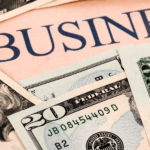As the U.S. Treasury prepares to phase out paper checks for federal payments by September 30, Chase is actively encouraging its customers to make the transition to direct deposit. This shift comes as part of a broader effort to modernize payment systems and improve the efficiency of disbursements. For those who rely on federal benefits, including Social Security recipients, this change signifies a pivotal shift towards digital financial management. Both the Treasury Department and Chase have emphasized that direct deposit provides a more secure and timely method for receiving payments.
The concept of eliminating paper checks has been around for years, driven by concerns over fraud and inefficiencies. Past initiatives aimed at reducing the circulation of paper checks have seen limited success. Current strategies now highlight enhanced security and faster transactions as compelling incentives. Unlike earlier efforts, recent measures underscore the impact of digital methods on minimizing the risk of theft and delays.
How Will Customers Transition?
The transition to direct deposit is facilitated through several avenues provided by Chase. Customers can contact the federal agency that issues their benefits, use the GoDirect.gov portal, or call a designated helpline for assistance. Chase branches are also available to help individuals with the shift to electronic payments. The emphasis is on ensuring that recipients of federal benefits navigate this transition smoothly with ample support.
What Are the Government’s Steps?
The federal government has outlined clear steps for those without bank accounts to access electronic payment methods. The FDIC’s GetBanked and the National Credit Union Administration’s MyCreditUnion.gov offer resources for individuals needing a bank account. Additionally, the Direct Express Debit Mastercard (NYSE:MA) is an available option, allowing users to access benefits without a traditional bank account. The Treasury emphasizes that these measures support a broader move to electronic financial systems.
“Direct deposit is not only a more secure option, but it also ensures that our customers receive their payments promptly without the risk of theft or delays sometimes associated with paper checks,” explained Steve Goodman, head of product for Chase Consumer Bank.
Scott Bessent, Treasury Secretary, noted the initiative’s role in reducing fraud and enhancing payment efficiency, stating “Reducing paper checks has been a longstanding bipartisan goal that our administration is finally putting into action.”
With President Trump’s executive order mandating an end to paper check issuance and acceptance, the focus has shifted to digitizing all federal payments. The initiative aims to enhance operational efficiency by utilizing electronic methods for disbursements and receipts. The government’s partnership with financial institutions highlights a collaborative approach in implementing these changes seamlessly.
The movement to electronic payments isn’t merely about convenience; it’s about addressing evolving consumer expectations for real-time transactions. Research indicates a growing preference for instant payouts among American consumers, with a significant majority favoring immediate access to funds. This sentiment aligns with the Treasury’s objectives to modernize financial transactions and address both security and efficiency concerns.









